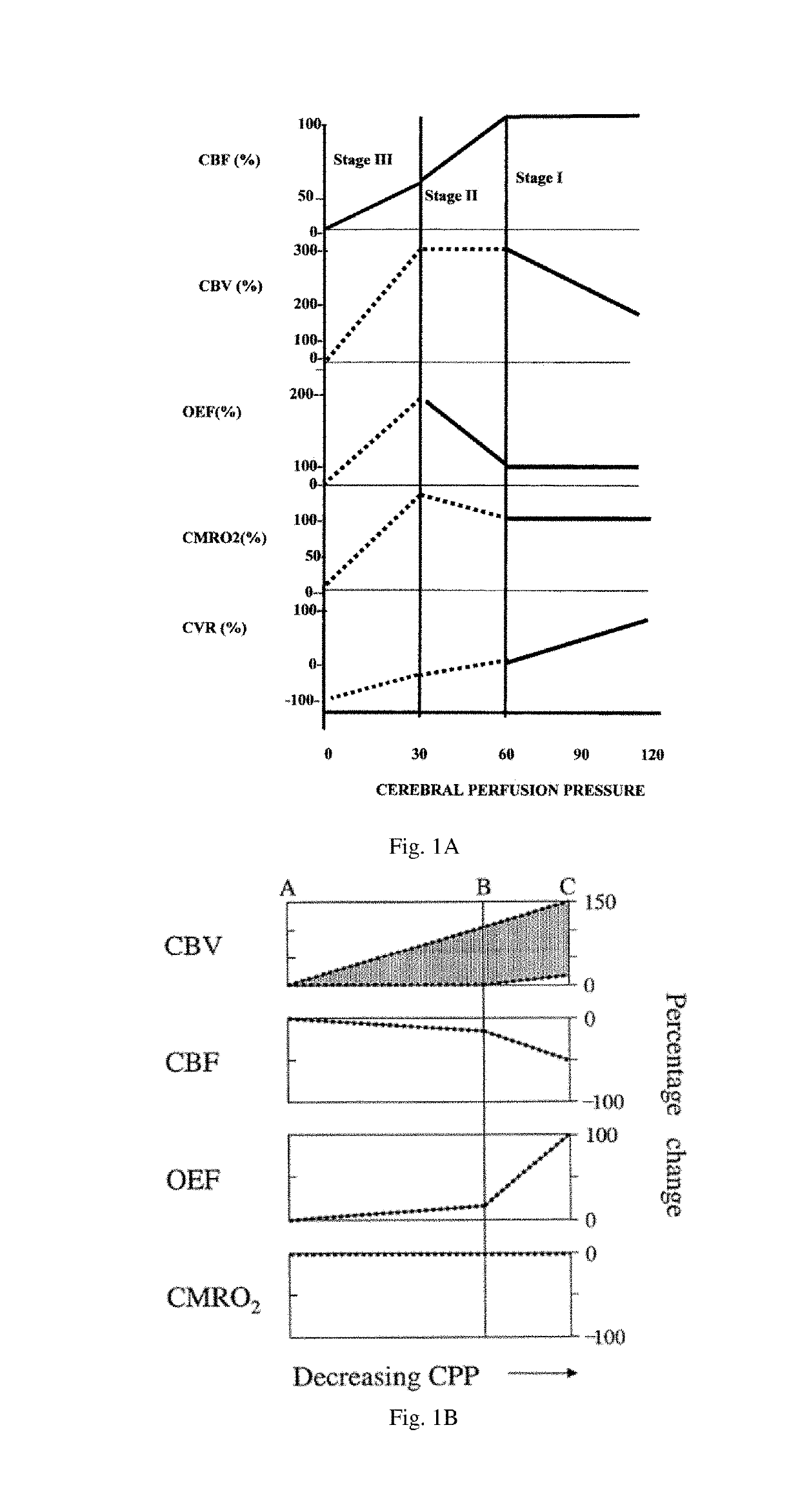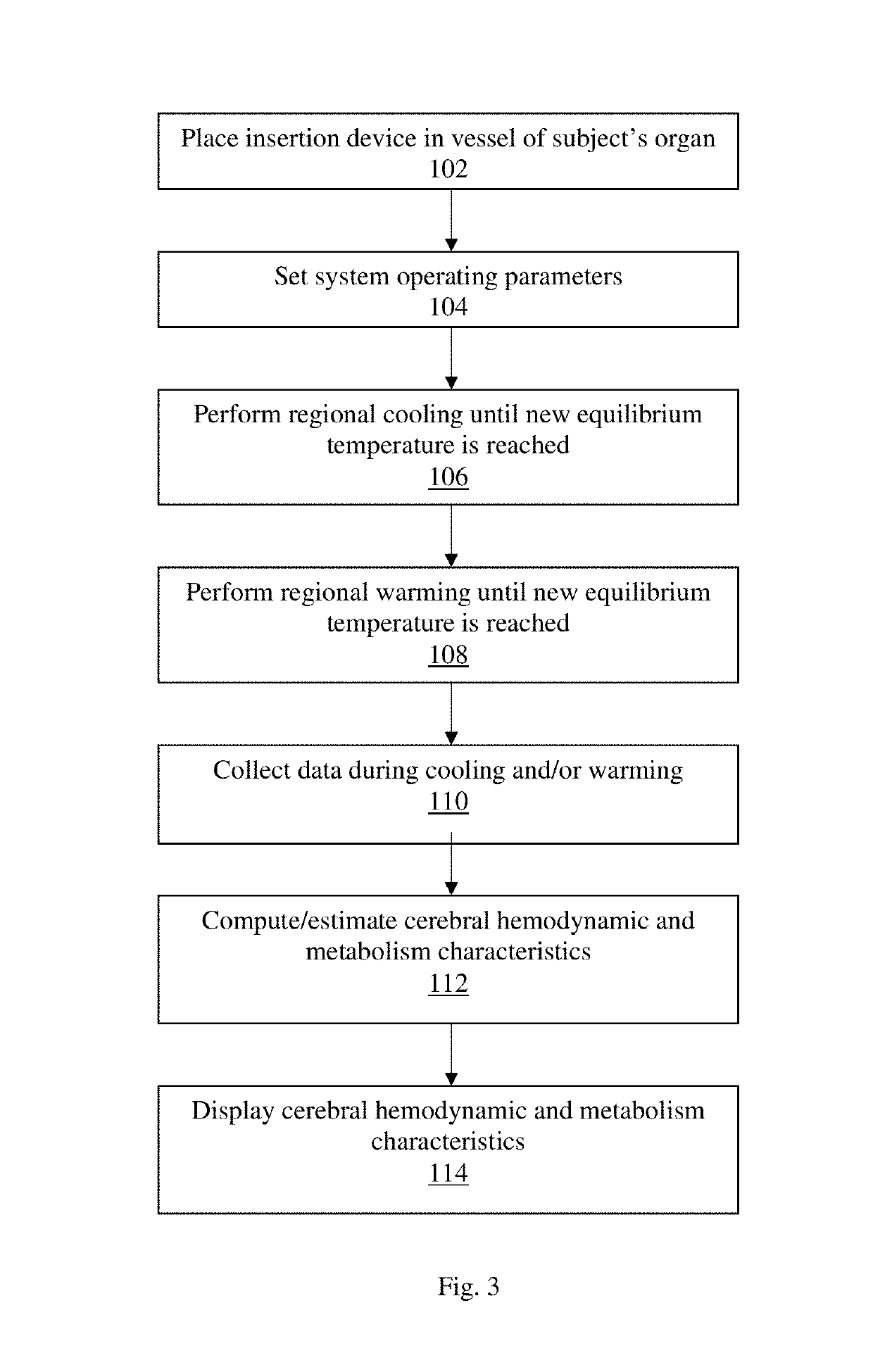Devices for estimating regional metabolic rate of organs based on heat generation and for estimating regional blood flow(s) for the volume(s) of tissue perfused
a technology of metabolic rate and organs, applied in the field of system and method for estimating regional metabolic rate and blood flow of a subjects organ during endovascular intervention, can solve the problems of inability to perform ischemic damage further other assessments, and inability to perform ischemic damage physiology assessment during the entire intervention. , to achieve the effect of lowering the temperatur
- Summary
- Abstract
- Description
- Claims
- Application Information
AI Technical Summary
Benefits of technology
Problems solved by technology
Method used
Image
Examples
example 1
[0081]In one embodiment, the system will provide the following information essentially immediately once the catheter is in place, e.g., in the internal carotid artery (ICA): T1 (local blood temperature, before cold infusion); T4 (core body temperature); AP (arterial blood pressure when hooked up to an a-line pressure monitor); MAP (mean AP, calculated from AP over time: MAP=[(2×diastolic)+systolic] / 3).
[0082]The following information may be made available within a very brief period (seconds) of cold infusion: —cold infusion temperature (Tinput); cold infusion flow rate (IR) and volume (infV); T1 (admixture temperature); T2 (distal cold infusion temperature); T4 (core body temperature); AP (arterial blood pressure when hooked up to an a-line pressure monitor); MAP (mean AP, calculated from AP over time: MAP=[(2×diastolic)+systolic] / 3); nvFR (native vessel flow rate, e.g., of the ICA, MCA, ACA, PCA etc., thermodilution method); and nVR (native vascular resistance: nVR=MAP / nvFR).
[0083]F...
PUM
 Login to View More
Login to View More Abstract
Description
Claims
Application Information
 Login to View More
Login to View More - R&D
- Intellectual Property
- Life Sciences
- Materials
- Tech Scout
- Unparalleled Data Quality
- Higher Quality Content
- 60% Fewer Hallucinations
Browse by: Latest US Patents, China's latest patents, Technical Efficacy Thesaurus, Application Domain, Technology Topic, Popular Technical Reports.
© 2025 PatSnap. All rights reserved.Legal|Privacy policy|Modern Slavery Act Transparency Statement|Sitemap|About US| Contact US: help@patsnap.com



